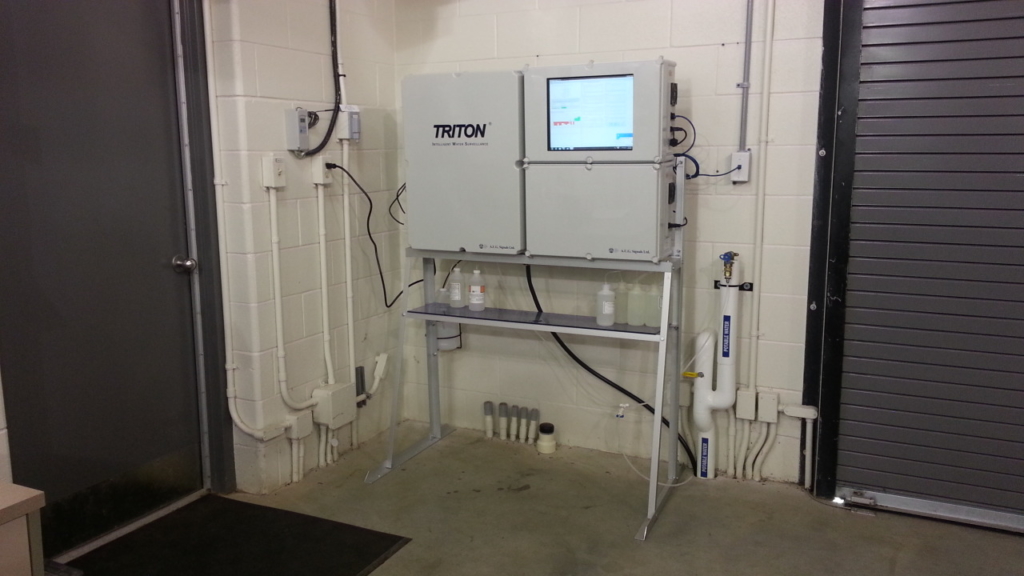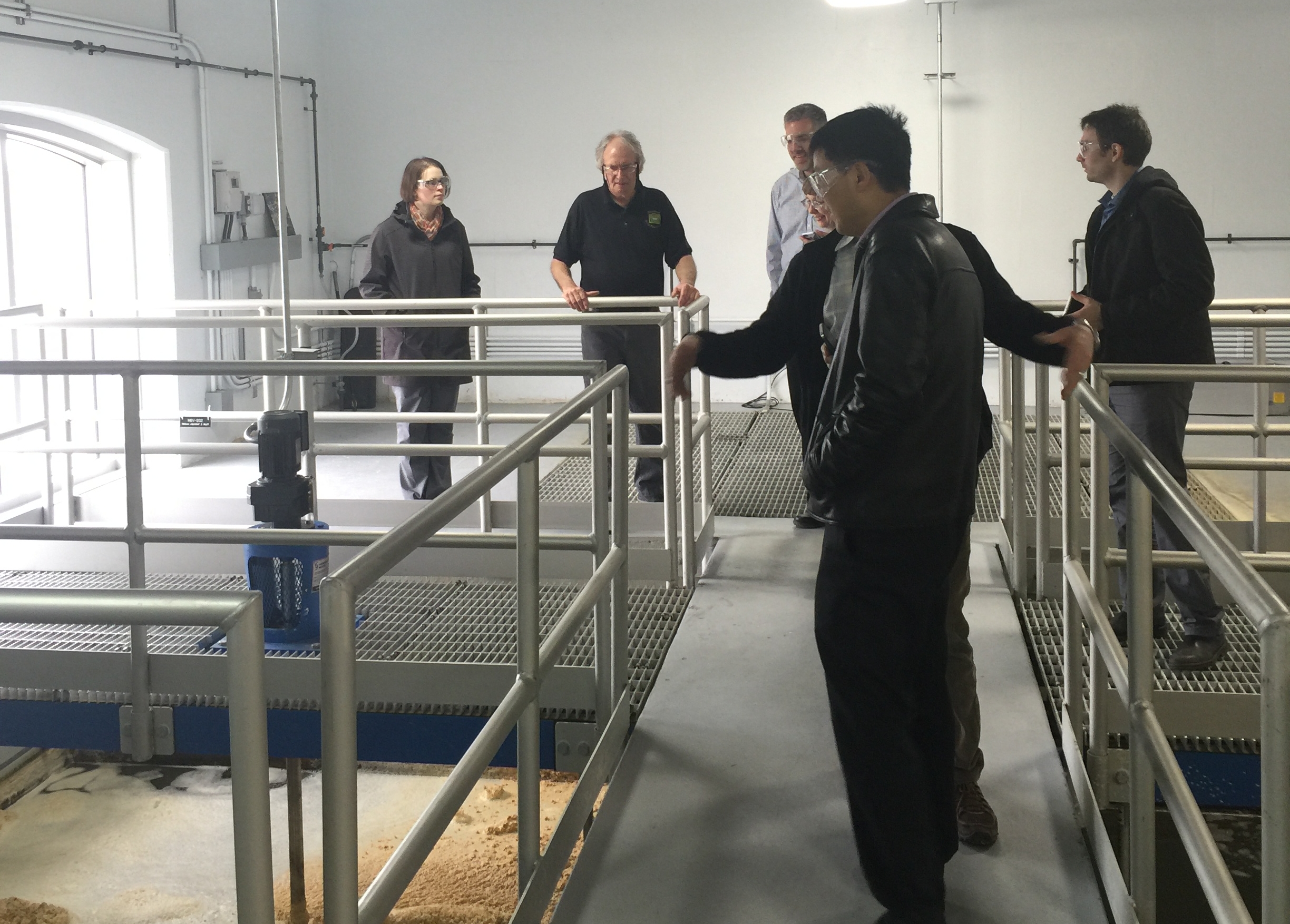Introducing new technologies to the inherently conservative drinking water industry can often be met with trepidation. That’s not the case, however, for operators at a water-treatment facility in Smiths Falls, Ontario.
Staff in Smiths Falls are embracing a pilot project to test a new, continuous monitoring sensor ultimately aimed at helping control levels of drinking water disinfection by-products, or DBPs.
“This team of operators in Smiths Falls is very proactive,” says Cindy Dongxin Hu, senior project manager at A.U.G. Signals Ltd., the Toronto-based company responsible for developing the online photonic sensor being tested at the town’s water-treatment plant.
Like other treatment facilities, Smiths Falls has experienced operational challenges dealing with increased levels of trihalomethanes, or THMs, as chlorine used in the disinfection process reacts with organic materials in water. The plant already monitors THMs beyond the minimum requirements, but A.U.G.’s system will add real-time readings on an hourly basis using advanced sensing technologies.
Over the 18-month project term, and in collaboration with researchers at the University of Toronto and plant operators, A.U.G. will test its remote photonic sensing system in a real-world operating environment in Smiths Falls. By monitoring levels of THMs continuously, A.U.G. aims to offer a user-friendly advisory tool that will help plant operators optimize their treatment parameters to minimize formation.
To do this, A.U.G. will install a prototype photonic sensor that uses spectral analysis algorithms to analyze water samples. The data will be monitored remotely by A.U.G. and University of Toronto researchers, who will compare results to standard laboratory analysis of water samples shipped from Smiths Falls.
“We’ll be able to do a parallel analysis of samples and see if our numbers match theirs,” says Ron Hofmann, an associate professor in the University of Toronto’s civil engineering department. “They obviously want their method to be as accurate as possible, which is why we’re taking this first step to compare their numbers to what we can generate in our lab,” adds Hofmann, the lead academic partner in the project.
The project is being backed by the Southern Ontario Water Consortium’s new Advancing Water Technologies (AWT) Program, which helps connect small- to medium-sized businesses in Ontario with academic experts to develop and demonstrate water technologies for successful introduction to the market.

A.U.G. Signals’ system prototype to be tested at the Smith Falls water treatment plant during the AWT project. Copyright: A.U.G. Signals Ltd.
Working with industry partners through programs like AWT can be critical, says Hofmann, who has been able to hire a full-time postdoctoral fellow for the project thanks to the program.
“In order for innovation to reach municipalities in the public sector, I think it really requires something like AWT,” Hofmann says. SOWC has partnerships with 10 Ontario post-secondary institutions, enabling it to connect A.U.G. with Hofmann.
A.U.G., which has worked with researchers a number of times, agrees that the AWT program has many benefits. Aside from giving it access to technical expertise and a research laboratory to validate its data, it also believes it will shorten the timeframe for which it would normally reach full commercialization of the technology by up to a year.
“We think this is a true accelerator for technology to be able to reach the real-test environment quickly,” Hu says.
The Smiths Falls pilot involves three additional A.U.G. staff members besides Hu. Its chief scientist specializes in signal processing technology and is focused on the data-portion of the project, while its senior software engineer is developing and building the instrument’s user interface, which will allow for remote monitoring. A.U.G.’s principal chemical engineer, Eric Morris, who is involved in sensor deployment, training and maintenance for the company, as well as A.U.G. Chief Scientist Dr. Chuhong Fei and A.U.G. Mechanical Technician Mr. Ulsi Vrenoraj traveled to Smiths Falls with Hu and Hofmann to arrange the set-up of the project.
“Our part is proving and updating the technology, and UofT researchers will understand how to use the technology and supervise the treatment procedures. We think this is a pretty good team,” Hu says.
Hofmann sees a significant research opportunity for his group in exploring what a team of operators can do when armed with A.U.G.’s online analysis.
“Ultimately, the goal is using the data to reduce the THMs,” he says.
A.U.G., founded in 1986 by George Lampropoulos, has been investing in the research and development of water monitoring applications for the past 12 years.
The company’s online sensor technology doesn’t replace mandated laboratory testing methods, Hu stresses, but rather will offer a first-hand screening of the THM content on a real-time basis.
Unlike other online THM analyzers which use gas chromatography (GC)-based methods, A.U.G.’s technology uses photonic sensors to measure colour changes that occur after reagents are added to the water samples. A.U.G. says its technology offers a number of advantages over GC methods, including lower costs, ease of use and compactness, all benefits to smaller facilities or remote communities. A.U.G. is targeting a system that would cost a fraction of GC systems, which can reach upwards of $100,000, and won’t require specialized technicians to operate it. The A.U.G. unit is also designed to be about the size of a small suitcase, and will use very little electricity.
For A.U.G.’s Morris, an ideal outcome of the project will be a workable instrument that closely reproduces lab results, is easy to use and maintain, and gives operators a solid understanding of day-to-day variations in THM levels.
Smiths Falls, he says, offers the perfect test environment.
“What’s really helping this project along is their involvement and the ability for us to go there and test in a place where we know the issue occurs,” he says.
Other Coverage of the Project
Smiths Falls water treatment operators keen to test new technology
Water treatment plant to take part in pilot project with University of Toronto


